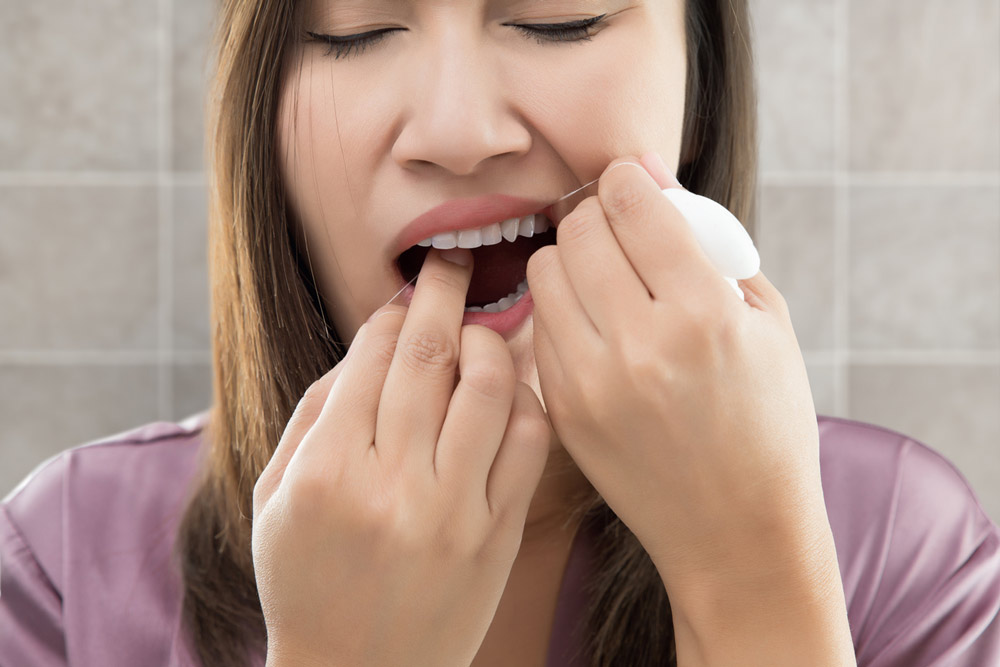Teeth Shifting: What to Do if Your Teeth Are Shifting after Treatment

Fortunately, thanks to dental after-care, the experts are already one step ahead of you and a backup plan is already in place. Here’s what to do if your teeth are shifting after treatment.
A Slight Amount of Shifting Is Normal
Your first point of call should be to ring your dentist who initially fitted your brace and explain the situation. After your brace is removed and your teeth are no longer under constant pressure to re-align, they will settle into their new place on their own. However, there are times when they settle into the wrong place, which is why it’s important to call your dentist right away for a check-up.
Don’t Rely on a Hunch
Whilst it is true that 99% of the time your gut feeling is always right, when it comes to dealing with shifting teeth it’s better not to take any risks—especially after you have invested time and money into perfecting your smile. While it is tempting to jump online and diagnose your own ailments and issues, you are never going to get an accurate and unique diagnosis. If in doubt, call a professional. It will be well worth your while.
Wear Your Retainer
The feeling of running your tongue over your teeth as soon as your braces have been removed can only be described as liberating and heavenly. After spending a year or more with braces on, you probably just can’t wait to show your smile off to the world. Like most things in life, there is never just one simple fix when it comes to achieving dental perfection. Your dentist will have likely fitted a removable retainer to wear at night for a specific amount of time. Be sure to follow this recommendation as otherwise, your teeth may start to move. If your teeth have shifted significantly, then it is likely you will need to wear your retainer for a longer period of time. Your specialist will be able to advise you.
 Consider Alternative Options
Consider Alternative Options
If your teeth have shifted a little too much for your liking, then your dentist will likely recommend some alternative options—depending, of course, on how severe the movement is. An excellent option for correcting minor post-treatment shifting is to consider wearing an invisible retainer. This will still allow you to be confident and smile, without worrying about your teeth looking cluttered with metal. At the same time, you will be able to rest assured that your teeth will be restored to perfection and stay that way for the foreseeable future.
Why Do Teeth Move?
There are a few reasons why even after treatment your teeth will still move. This is especially true if you had braces as a teenager and you find yourself with slightly crooked teeth again in your mid-twenties. It’s important to remember that your jaw will continue to grow over the years and, as it grows, the surrounding muscles will narrow the width of your jaw. This means there less space for your teeth and they will start to become crooked or crowded at the front.
Some other factors that cause shifting include:
- Smoking
- Gum disease
- Tooth grinding
- Loose teeth
- Poor dental hygiene
Now that you might have a better idea of why your teeth are shifting after treatment, you can decide what to do.
What Happens if Nothing Is Done?
If after reading this article, you realize that your tooth shifting is normal and very minor, then it’s a good idea just to run this by your dentist to confirm your suspicion. Most dentists will offer a certain amount follow up check-ups after treatment at no extra charge. If you suspect that your tooth movement is noticeable and it’s due to one of the aforementioned reasons, then you should read on.
If you have already noticed that your teeth are shifting outside of the normal settling parameters, then you absolutely need to do something. If you choose to do nothing about the movement, you may find that it worsens over time. Not only does that mean that your previous treatment will have been rendered ineffective, but it also means that you could be at risk of developing jaw pain and have difficulty chewing in later years.
How Can I Prevent My Teeth Shifting after Treatment?
Once you have obtained your ideal results from your initial treatment, it’s time to preserve them. If you don’t want your teeth to shift, then here’s a checklist to make sure you are giving them everything they need:
- Floss and brush your teeth regularly and thoroughly to maintain optimal dental health.
- Avoid high impact sports without wearing facial protection.
- If you suffer from tooth grinding at night, wear a retainer.
- Avoid fizzy drinks and sugary sweets.
- Always schedule regular check-ups at your dental clinic.
- Follow your after-care plan strictly for optimal results.
Conclusion
Regardless of how much your teeth have moved since treatment, or to what degree- there is fortunately always a solution and it’s not going to cost you a fortune. With dental technology advancing every day, we are seeing more and more discreet teeth re-alignment products entering the market. If you catch your problem early, then you won’t have to start off right at the beginning and go through the whole treatment again.
Invisible retainers and tooth aligners are a common solution to tooth movement and one that almost all dentists recommend. If your tooth movement is already far advanced, then you could also have a fixed retainer fitted behind your teeth to correct the shift that has already taken place.
There is always going to be a way to correct the problem that will satisfy your needs as well as your budget so it’s worth discussing your options with your dentist to find your perfect fit!

 Consider Alternative Options
Consider Alternative Options